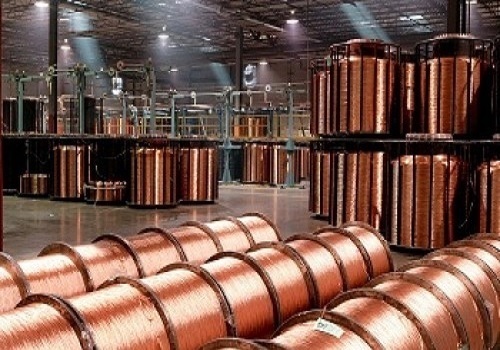Copper Prices Whipsaw Amid Trump's Tariff Uncertainty by Amit Gupta, Kedia Advisory

The copper market is experiencing extreme volatility due to U.S. President Donald Trump’s unpredictable tariff policies. Prices plunged to a 17-month low after China retaliated to U.S. tariffs but bounced back above $9,000 per ton following a temporary tariff reprieve. Arbitrage gaps between the London and U.S. markets have widened and narrowed rapidly, signaling forced liquidations and market stress. Traders are rushing to ship copper to the U.S. ahead of potential new tariffs, tightening global availability and driving stock drawdowns in China and on the LME. The result is a market caught between weakening global demand concerns and short-term supply disruptions, promising continued turbulence.
Key Highlights
* Copper prices plunged to a 17-month low, then rebounded sharply.
* LME-CME arbitrage saw wild swings from $1,600 to $230 per ton.
* Traders rushing shipments to the U.S. ahead of expected tariffs.
* Inventories falling sharply in China and LME warehouses.
* Market split between macroeconomic fears and micro supply shifts.
Copper prices have been on a roller-coaster ride, mirroring the unpredictable nature of U.S. President Donald Trump’s evolving tariff strategies. On April 7, the London Metal Exchange (LME) three-month copper contract slumped to a 17-month low of $8,105 per metric ton, reacting to China’s retaliatory tariffs. However, a brief 90-day reprieve from U.S. tariffs (excluding China) and a pause on electronics tariffs triggered a fierce rebound, pushing copper back above $9,000 per ton.
This price volatility is compounded by extreme movements in arbitrage between LME and CME prices. The U.S. premium over London crashed from $1,600 to just $230 per ton in early April, before recovering to over $1,000—indicative of forced position unwinds and market stress.
Adding to the chaos is a physical supply chain reshuffle. Traders are racing to move copper into the U.S. before any formal Section 232 tariffs are announced. This has led to stockpiles rising in CME warehouses, notably in New Orleans and Baltimore, while LME inventories have hit a nine-month low. In China, the usual post-holiday stock buildup has peaked early, with inventories rapidly falling and the Yangshan premium climbing, suggesting a tightening domestic supply.
Meanwhile, Chinese smelters are boosting exports—some directly to the U.S.—to capitalize on higher premiums, with exports nearly doubling year-on-year.
The copper market is now a battleground between macroeconomic slowdown fears and micro-level supply distortions, driven by policy uncertainty.
Finally
Copper’s wild swings are set to continue as global economic anxiety clashes with shifting trade flows under tariff pressure.
Above views are of the author and not of the website kindly read disclaimer






















